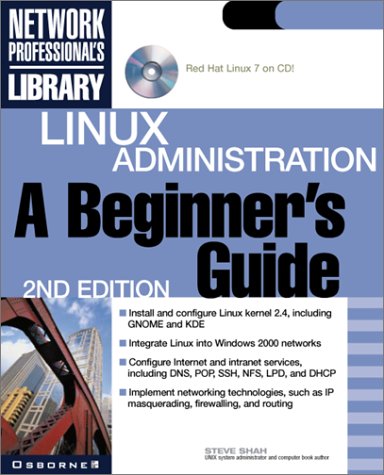
Publishing Rationale – Linux Sustaining Growth – According to IDC, a research firm, Linux was the fastest growing operating system last year, with a 93 percent growth rate over the year before. Linux was the second most shipped operating system in 1999 after Windows NT, capturing 24 percent of new licenses shipped. – Building on the success of the previous edition – Linux Administration: A Beginner’s Guide raving reviews and sold over 14,000 copies in the first six months of publication. – Need for Beginner’s Guide – System administrators will not have the same kind of technical support with open-source Linux as they would with other commercial big-vendor OS’s. Therefore, there is a huge need for a technically accurate guide to Linux Administration.Administering a Linux system isn’t much like administering a Windows machine. Though the goals are similar and comparable problems arise under both environments, they each require administrators to adopt a certain way of thinking about processes and data. Linux Administration: A Beginner’s Guide helps readers adapt their Windows experience to Linux work. Author Steve Shah does a great job of clueing Linux newcomers into the environment. His explanations are clear, patient, accurate, and useful, and they cover all aspects of the system administrator’s job. He’s careful to explain hundreds of commands in a logical way, including lists of options and examples of typical uses in many cases.
But this is no mere command reference or novice’s introduction. Shah doesn’t shy away from explaining the really interesting aspects of Linux administration, including kernel compilation, Domain Name Service (DNS) configuration, sendmail setup, and establishing firewall protection with IP chaining. For all of these subjects (and many more), this book includes clear statements of what concepts are relevant, which commands to issue, and what to expect in response. It’s a great help in self-guided explorations. It’s also worth having this book on hand for work assignments–you’ll find complete recipes for configuring all major Internet and local area network (LAN) services that also take into account easy maintenance and security. –David Wall
Topics covered: Administering Linux 2.2.x (particularly Red Hat, Caldera, and SuSE distributions). Installation, initial configuration, using the bash command shell, managing files, managing software, and granting rights to users. DNS, FTP, Apache, sendmail, Samba, and other services receive lots of attention.



